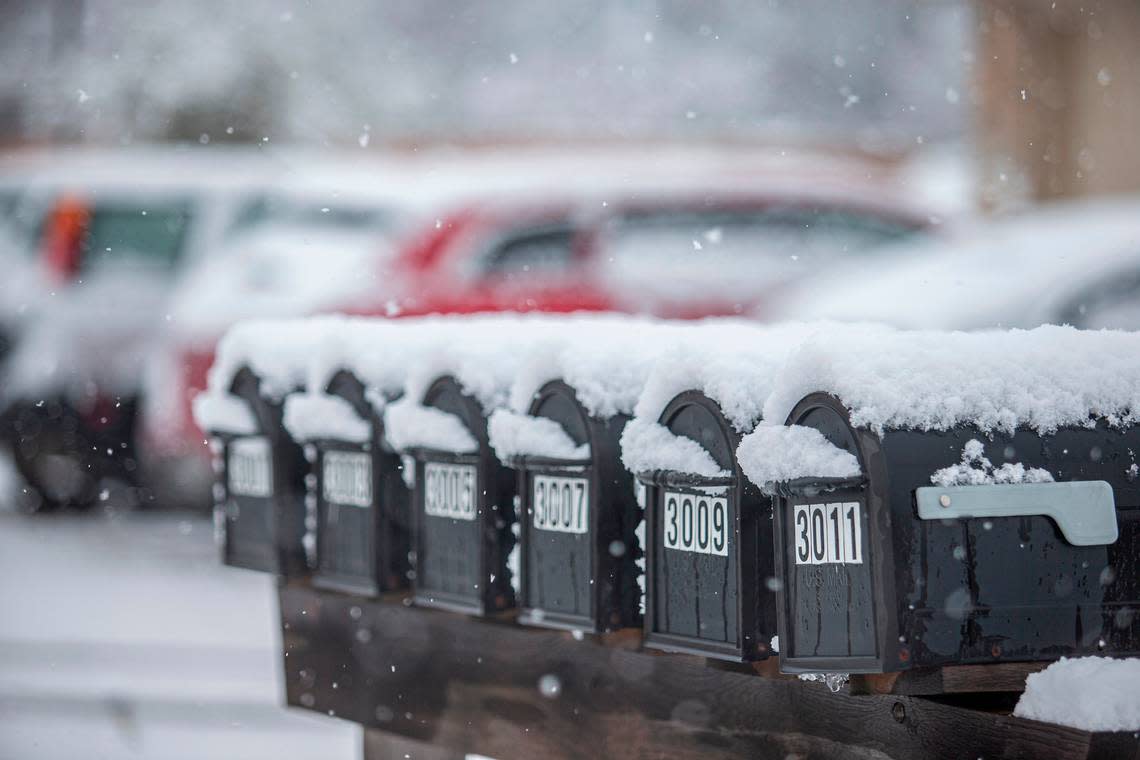UPDATE: Thunderstorms with marble-sized hail to hit North Texas

The NWS Fort Worth TX issued an updated report at 4:33 p.m. on Sunday, warning residents of strong thunderstorms. The warning is for Somervell, Johnson, Bosque and Hill counties. The storms are expected to bring marble-sized hail (0.5 inches) and wind gusts of up to 50 mph.
"At 4:33 p.m., Doppler radar tracked a strong thunderstorm 8 miles northeast of Meridian, or 17 miles north of Clifton, moving south at 10 mph," according to the NWS. "Gusty winds could knock down tree limbs and blow around unsecured objects. Minor damage to outdoor objects is possible."
Locations impacted by the warning include Glen Rose, Meridian, Laguna Park, Iredell, Cleburne State Park, Meridian State Park, Lake Whitney, Dinosaur Valley State Park, Lake Whitney State Park, Walnut Springs, Morgan, Retreat, Cedar Shores, Lakewood Harbor, Eulogy, Kopperl, Brazos Point, Rainbow, Lakeside Village and Nemo.
According to the NWS, "If outdoors, consider seeking shelter inside a building."
This warning is in effect until 5 p.m.
How to react when facing a lightning hazard?
Lightning strikes the United States about 25 million times a year. Most of the strikes occur in the summer, killing 20 people each year, according to the National Weather Service. Chance of lightning increases as a thunderstorm approaches and peaks when the storm is overhead. It diminishes as the storm moves away.
Here are recommendations for maintaining safety during a thunderstorm:
• To reduce the chance of being struck by lightning, when venturing outside, have a plan to get to a safer area.
• If the sky becomes menacing and thunder becomes audible, seek out a safe place to seek shelter.
• Once inside, abstain from touching corded phones, electrical devices, plumbing, and windows and doors.
• Wait for 30 minutes after the final lightning or thunder before heading outside again.
If finding indoor shelter is not an option:
• Steer clear of open fields, hilltops, or ridge tops.
• Keep a distance from tall, isolated trees or other elevated objects. If in a forest, stay close to lower trees.
• When in a group, space out to prevent the current from transferring between individuals.
• If you are camping in an open area, set up camp in a valley, ravine, or other low area. Remember, a tent offers no protection from lighting.
• Stay away from water, wet items, and metal objects. Water and metal do not attract lightning but they are excellent conductors of electricity.
What to do in the rain on the road?
• Turn on headlights — Even in daylight, using headlights can help improve visibility and let other drivers know where you are.
• While driving — Stick to the middle lanes and stay on elevated ground. Rainwater tends to accumulate at the road edges.
• Steer clear of puddles — Driving into puddles or low areas of rainwater can cause vehicles to hydroplane or skid out of control.
• Do not follow large vehicles closely — Large vehicles like trucks or buses can create a spray of water that can reduce your visibility.
• Steer clear of flooded areas — When coming to a flooded road, turn around and head back. Flash flooding currents are strong and can sweep drivers off roadways. Driving through deep water can also affect a vehicle’s mechanical and electrical systems.
What is hydroplaning?
Hydroplaning is when a vehicle starts uncontrollably sliding on wet roads.
This happens when water in front of the tire builds up faster than the vehicle’s weight can push water out of the way. The water pressure then causes the vehicle to rise and slide on a thin layer of water between the tires and the road, making the driver lose control. The top three contributors to hydroplaning are:
1. Vehicle speed — When a vehicle’s speed increases, the tire-traction grip and ability to control the vehicle decreases. Drive at a reduced speed during wet weather.
2. Water depth — The deeper the water, the sooner a vehicle loses traction on the road. It doesn’t matter how deep the water is, even a thin layer can lead to hydroplaning.
3. Tire tread depth — Checking your tire tread before hitting the road is important, as low or no tread can lead to sliding.
In the event of your vehicle hydroplaning, here’s what to know:
• Ease off the accelerator — Step off the gas to slow down the vehicle until the tires find traction.
• Turn into the skid — Turning into the skid can help the vehicle’s tires realign to regain control.
• Make sure the tires reconnect with the road — During the skid, wait until the tires reconnect with the road and then gently straighten the wheels to regain control.
• Brake gently as needed — Brake normally if the vehicle has anti-lock brakes and pump brakes gently if in an older vehicle.
Source: The National Weather Service
This article was generated by the Star-Telegram Bot, artificial intelligence software that retrieves information from the National Weather Service and applies it to templates on our website. We are experimenting with this and other new ways of providing more useful content to our readers and subscribers. You can report errors or share your thoughts by filling out our (feedback form).


